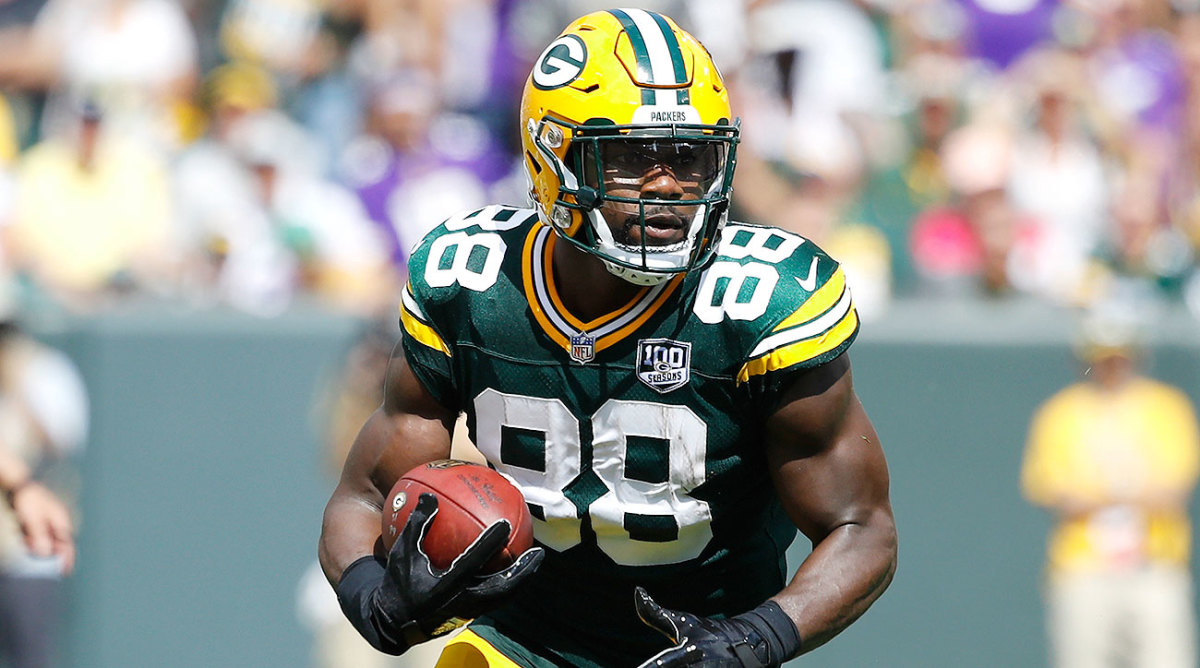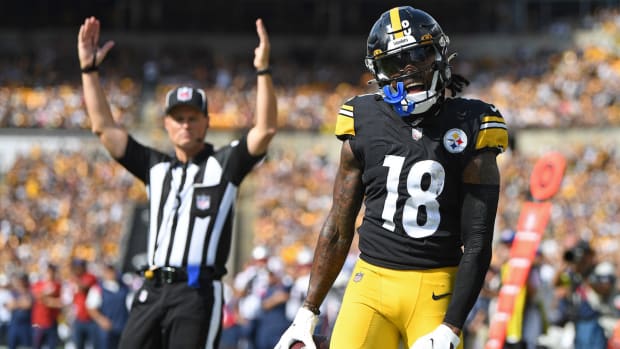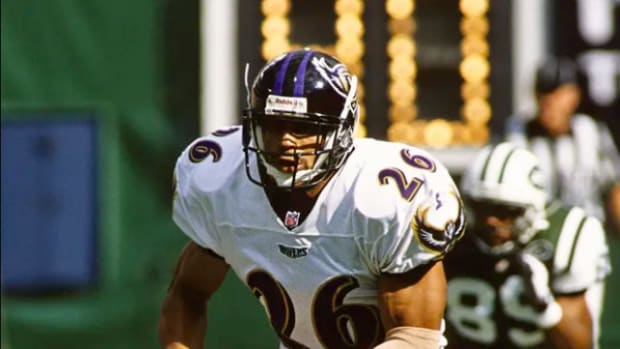In Praise Of ... the Rules and Regulations for NFL Uniforms

After a week of bad takes, it’s time to feel good about football! This week on The MMQB, our writers and editors are taking time to praise what they like most about the NFL. Agree or disagree with the praise? Send us an email at talkback@themmqb.com.
When the NFL fines players for uniform code violations, it’s often branded the “No Fun League.” Really, what’s no fun is a motley assortment of player appearances. Players wearing different-colored socks, arm bands, gloves, shoes, mouth guards, etc. make them look more like the Little Giants, not a professional football team. It’s annoying when a player on a team with, say, blue and white colors has a red mouthpiece. Jonathan Stewart wore his Oregon shoulder pads for most his career, and under his black and blue Panthers jersey you’d see the Ducks’ bright yellow. For years under Jared Allen’s purple Vikings jersey you could see his old red Chiefs shoulder pads. This is all too common; players wearing their old shoulder pads is fine, but teams should change the color of the pads’ cloth lining.
By maintaining strict uniform rules, the NFL also strengthens the impact when players ARE allowed to wear contrasting colors in the name of a good cause. The novelty of that made the pink of Breast Cancer Awareness month all the more noticeable and intriguing. Same with the newer My Cause, My Cleats campaign.
The NFL closely regulates uniforms league-wide—and for good reason. Teams must submit new uniforms for approval, and that process, like many organizational processes, can be needlessly long, but in the end it maintains sanity. By overseeing uniforms, the league ensures a nice mix of colors throughout its game. Take the Eagles, for example: There have been murmurs about the team returning to its old kelly green digs, but that would be terrible because that shade of green is much too similar to the Packers’ and Jets’ colors. The Eagles give the NFL color balance by being its only dark green team. Eagles fans want the kelly green because all fans have somehow become conditioned to believe that yesterday’s uniforms are better than today’s. If the Eagles wore kelly green now and dark green in the 80s and 90s, fans would be clamoring for the good ol’ days of dark green.
The league also requires that certain positions wear certain numbers: Linebackers wear numbers in the 40s and 50s, quarterbacks can only wear numbers 1-19, receivers must wear numbers in the 80s or, thanks to Keyshawn Johnson, 10-19. College football looks like complete chaos because you might have a quarterback wearing, say, number 47 and a linebacker wearing number 14. Often, you can’t tell what position a man plays until he lines up. Besides screwing up fans’ viewing experience, this makes scheming needlessly difficult, as offenses have a tougher time differentiating blitzers from regular pass rushers, and defenses might not innately know when a receiver is actually just a running back split out wide.
The NFL graces us with jersey numbers that tell an accurate story—when you see an NFL player in uniform, you know almost right away what position he plays. That is, of course, unless he is Ty Montgomery, a receiver who years ago became a running back but, inexplicably, is still allowed to wear number 88. If the NFL more strictly enforced its own jersey number rules (and maybe cut down on the number of times a team can wear alternate uniforms) the league, from a uniform standpoint, will be perfect.
Question or comment? Email us at talkback@themmqb.com.





































